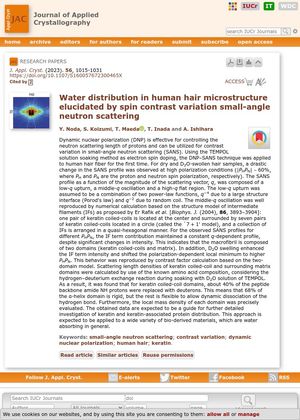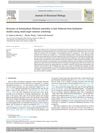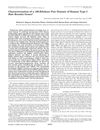Water Distribution in Human Hair Microstructure Elucidated by Spin Contrast Variation Small-Angle Neutron Scattering
June 2023
in “
Journal of applied crystallography
”

TLDR The technique showed that human hair has two main parts, with 68% being rigid and the rest flexible, and water swelling affects its structure.
The study used a technique called Dynamic Nuclear Polarization (DNP) in combination with small-angle neutron scattering (SANS) to investigate the microstructure of human hair fiber. This was the first time this technique was applied to human hair. The researchers observed significant changes in the SANS profile of both dry and D2O-swollen hair samples under high polarization conditions. The SANS profile was composed of a low-q upturn, a middle-q oscillation, and a high-q flat region, which were explained using a structure model of intermediate filaments (IFs). The study found that the macrofibril of the hair is composed of two domains (keratin coiled-coils and matrix), and D2O swelling enhanced the IF term intensity. The researchers also found that about 40% of the peptide backbone amide NH protons in keratin coiled-coil domains were replaced with deuterons, indicating that 68% of the α-helix domain is rigid, while the rest is flexible. This research provides valuable data for further investigation of keratin and keratin-associated protein distribution and can be applied to a wide variety of bio-derived materials.








